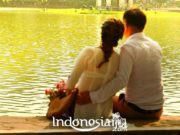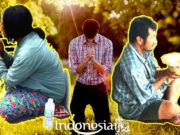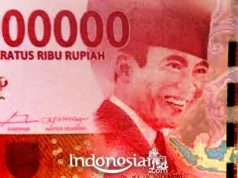Palembang City is the oldest city in Indonesia, at least 1382 years old, based on the Sriwijaya inscription known as the Bukit Position inscription. According to the inscription which is dated June 16, 682. At that time the Sriwijaya ruler established Wanua in the area which is now known as the city of Palembang. According to the topography, the city is surrounded by water, even submerged by water. The water comes from both rivers and swamps, as well as rainwater. Even today the city of Palembang still has 52.24% of the land inundated by water (Statistics 1990 data). It is possible that because of this condition, the ancestors of the people of this city named this city as Pa-lembang in the Malay language Pa or Pe as a word indicating a place or situation; while lembang or lembeng means low land, the root valleys that swell because they have been submerged for a long time (according to the Malay dictionary), while according to the Malay-Palembang language, lembang or lembeng are puddles of water. So Palembang is a place inundated by water.
This natural condition for the ancestors of the Palembang people became their capital to utilize it. Water is a very vital, economical, efficient and affordable means of transportation and has high speed. Apart from natural conditions, the city’s strategic location is in a network capable of controlling traffic between three unified regions:
The highlands of Western Sumatra, namely: the Bukit Barisan Mountains.
The area of the foothills or piedmont and the confluence of tributaries as they enter the lowlands.
Northeast coastal area.
These three territorial units are local factors that are very decisive in the formation of civilizational cultural patterns. Local factors in the form of networks and high-frequency commodities had already been formed and succeeded in encouraging local people to create high-growth cultural patterns in South Sumatra. These local factors have made Palembang the capital of Sriwijaya, which was a political and economic force in classical times in the Southeast Asian region. The glory of Sriwijaya was taken by the Palembang Darusallam Sultanate during its middle age as a respected sultanate in the archipelago.
Sriwijaya, like other forms of government in Southeast Asia at that time, was known as Port-polity. The notion of Port-polity began simply as a redistribution center, gradually taking over a number of forms of increasing progress contained in the broad spectrum. The center of the growth of a Polity is an entreport that generates additional wealth and cultural contacts. These results were obtained by local leaders. (in Sriwijaya the term is datu), with this result is the basis for the use of economic power and political power in Southeast Asia.
There is an interesting article from the Chinese chronicle Chu-Fan-Chi written by Chau Ju-Kua in the 14th century, telling about Srivijaya as follows: This country is located in the South Sea, controlling foreign trade traffic in the Strait. In ancient times the port used iron chains to hold back malicious pirates. When foreign boats come, the chain is lowered. When it was safe again, the chain was removed. The boats passing without stopping at the port were surrounded by boats belonging to the kingdom and attacked. All the crew members of the boat dared to die. That is why the country has become a shipping center.
Of course there are many more stories, legends and even myths about Sriwijaya. Foreign Chinese sailors such as Chinese, Arab and Persian, recorded all events whenever the stories they saw and with. If Arab and Persian sailors described the condition of the Musi river, where Palembang was located, it was like a city in the Tiggris. The city of Palembang is described as a very large city, where when entered into the city, the crowing of the rooster does not stop shouting (meaning the crowing of the cock follows the rising of the sun). The stories of their journey are full of the magic of 1001 nights. The Chinese sailors recorded a more realistic view of the city of Palembang, where they saw how the life of the city dwellers living on rafts without being taxed. Whereas the leader lives in a house on dry land above a colonnaded house. They spell the Palembang name according to their tongue and characters. Palembang is called or pronounced by them as Po-lin-fong or Ku-kang (meaning the old port). After experiencing its glory in the 7th and 9th centuries, in the 12th century Srivijaya experienced a gradual collapse. The collapse of Srivijaya, both due to competition with the kingdoms in Java, the battle with the Cola kingdom of India and finally this fall was inevitable after the rise of Islamic kingdoms in the archipelago. Islamic kingdoms, which were small parts of the Srivijaya kingdom, developed into large kingdoms like those in Aceh and Peninsular Malaysia.
Source : Pemerintah Kota Palembang






























